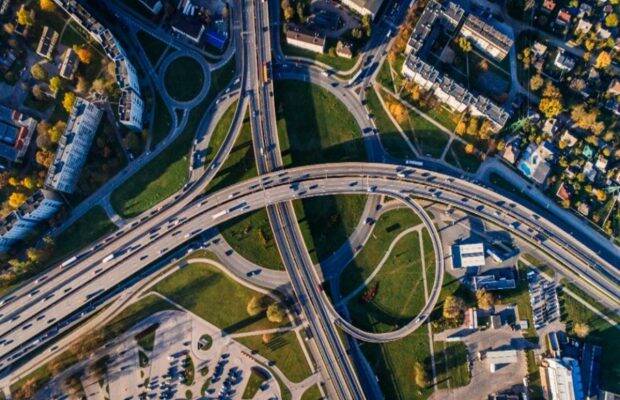Industrial corridors as catalysts for sustainable urbanization across India
By Anshuman Magazine, As we step into 75 years of independence, there is a vital need to focus on evolving a shared and an implementable vision of a resilient future India. The current Government, therefore, through both policy and planning, is keenly looking to drive ideas which encompass the key pillars of national growth. Some of these include livelihood enhancement through creation of meaningful and value-added employment, better quality of life through superior and affordable housing, enhancement of environmental goals and enhanced connectivity platform for goods, services, and the people movement.
These factors will essentially form the bedrock for modern day sustainable habitation, backed by a strong industrialization platform as the primary driver of the economy. Other unique selling points of India’s future potential lie in the burgeoning young population, increasing disposable income and competitive factors of production, all of which has to be underpinned by proactive Governance.
According to the World Bank, India as a nation has emerged as one of the most successful economies of the world, registering an annual GDP growth rate of nearly 6% over the past decade. Notwithstanding the detrimental effect of the pandemic, India truly has the potential to become the third largest economy of World (after the USA and China) by 2030. A key outcome of such economic growth is often rapid and unplanned urbanisation, but the answer to equitable nation building lies in the creation and expansion of future economic nodes, in an equitable geographic manner, to achieve balanced development across the country.
If we analyse the spread of growth across India, we realise that urban India today contributes nearly 55 to 60% of the total GDP of India and with growing in-migration from all parts of the nation, India’s current set of mega city metropolitan areas are increasingly becoming more densely populated. This massive urbanization, albeit a testimony to India’s progress as a nation, also exerts enormous pressure on the civic infrastructure. As population pressure mounts, authorities are grappling to provide basic amenities such as water, power, roads, parking, safety, amongst others. Hence, the need for inclusive economic policies which shall distribute this massive urban population in an equitable manner across various locations of the country emerges as one of the needs of the hour. While the mega cities of India will continue to shoulder the burden of this urban population boom, it is imperative to provide sufficient economic stimulus to smaller towns and cities such as Nagpur, Agra, Palakkad. Warangal, Satara, Prayagraj, amongst others.
One of the key exponents of propagating equitable economic and employment benefits within the country, is the  development of industrial corridors on a pan India platform, currently being undertaken under the leadership of the National Corridor Development Corporation of India. These industrial corridors which are being planned and developed, along multiple multimodal transportation spines, such as rail or national highways, have the potential to infuse equitable and sustainable urbanisation by creating economic nodes across the country, and thereby reducing the need for migration to the mega cities of India.
development of industrial corridors on a pan India platform, currently being undertaken under the leadership of the National Corridor Development Corporation of India. These industrial corridors which are being planned and developed, along multiple multimodal transportation spines, such as rail or national highways, have the potential to infuse equitable and sustainable urbanisation by creating economic nodes across the country, and thereby reducing the need for migration to the mega cities of India.
Realizing the potential of economic corridors, the current Government has begun an ambitious journey of expanding the plan of developing industrial corridors, from the initial single Delhi Mumbai industrial corridor to implementing 11 such projects across India. These corridors are being strategically planned to traverse the length and breadth of the corridor to spread the economic benefits to remote corners of the country and ensure an equitable economic development. Presently eleven corridors have been planned; these industrial nodes are being planned in a manner to make them self-sustaining urban ecosystems, replete with various urban infrastructure alongside industrial infrastructure. Most of these nodes imbibe the concept of integrated township living and a walk to work concept, by providing residential, retail, entertainment as well as healthcare facilities to blue and white collared workers, as well as the larger populace in the region.
As a case in point, the Dholera Special Investment Region which has quality social and residential infrastructure planned alongside industrial development. In a significant way, affordable housing therefore becomes a key feature of these corridors which is also in alignment with the Government’s overarching objective of providing housing for all. The proposed industrial corridors in essence strive to achieve these goals by creating employment and providing accommodation for all income groups.
Industrialization as a catalyst for urbanization, has historically had a strong precedence in India, where industrial towns such as Jamshedpur, Bhilai, Vizag, etc., developed alongside major manufacturing plants. However, learnings need to be drawn from these developments as many of them have also struggled to cope with unplanned urbanization and the question of sustainability and long-term life of such nodes, specifically in terms of their residential offerings. The industrial corridor planning programme, now plans to develop strategies which hope to mitigate such issues and put into practice innovative concepts for the economic nodes being developed so that the horizon of development and use of such projects are time proofed.
The National Industrial Corridor Development Programme is providing a strong platform and foundation for long term urban planning and urbanisation. This programme brings to the forefront that such planning and infrastructure development should be undertaken, much before marketing or implementation of industrial units, as it is typically difficult to ramp up urbanisation capacities such as transport, connectivity, utilities, financing, etc. once the process of city building is underway.
Another major goal which shall be achieved through development of industrial corridors would be enhancement of connectivity. In an endeavour to develop these industrial nodes, a significant amount of investment shall be made into development of physical infrastructure such as last mile connectivity, transportation linkages such as rail siding, power capacity augmentation. This infrastructure shall also provide significant fillip to the local economy and infrastructure development to smaller towns and cities. It is pertinent to know that one of the flagship projects announced by the Government of India would be the Gati Shakti Master Plan, which intends to connect major industrial clusters, to smaller and newer economic towns, thereby providing opportunities for seamless backward and forward linkages to manufacturers. This initiative shall further allow for seamless movement of labour from one manufacturing region to other, thereby, leading to rapid urbanization across new nodes.
It is estimated that the employment generation is nearly 50 to 60 per acre for such industrial nodes. As a cascading effect, this population would further drive demand for residential and institutional infrastructure of the region, thereby making such projects viable, which were hitherto struggling to generate demand. The benefits of industrialization shall not merely be restricted to demand for housing; a cascading impact on the service sector is also envisaged. The potential to create jobs within the service sector is immense as demand for various services such as banking, finance, logistics, and hospitality shall increase with a jump in industrialization.
A key aspect of developing these industrial nodes as a new age industrial township would be addressing the challenges around sustainability and climate change. Thus, environmental and social concerns backed by strong governance is critical to make these cities habitable over sustained periods of time. Most of these industrial nodes have an unwavering commitment towards sustainability and incorporate measures such as use of renewable energy, rain water harvesting as key planning elements. Hence, eco-industrial parks and smart cities shall take centre-stage of planning in the foreseeable future.
However, private sector participation needs to be encouraged through conducive concession agreements and incentivizing developers through competitive access to finance, encumbrance free land and others. Furthermore, it is imperative to allow private concessionaires to realize profits from higher rent yielding assets such as commercial, retail, hospitality. Hence, integrated townships are not only conducive from a planning perspective but also make them more attractive from a private sector participation as well. Realizing this opportunity, a number of nodes are being envisaged by NICDC to be developed through participation of private developers.
Perhaps the single most significant achievement of these NICDC nodes shall be to integrate a number of Government of India schemes under one common initiative. While the Government has a number of schemes which promote various urban development initiatives such as housing for all, rental housing schemes, city rejuvenation, the industrial corridors have the potential to integrate all such initiatives through a common driver. Hence, NICDC nodes assume a massive importance in fostering economic benefits coupled with urban development and sustainable development and propelling the future developments of the country.
(The author is Chairman & CEO, CBRE – India, South-East Asia, Middle East & Africa. Views expressed are personal and do not reflect the official position or policy of the Financial Express Online.)




